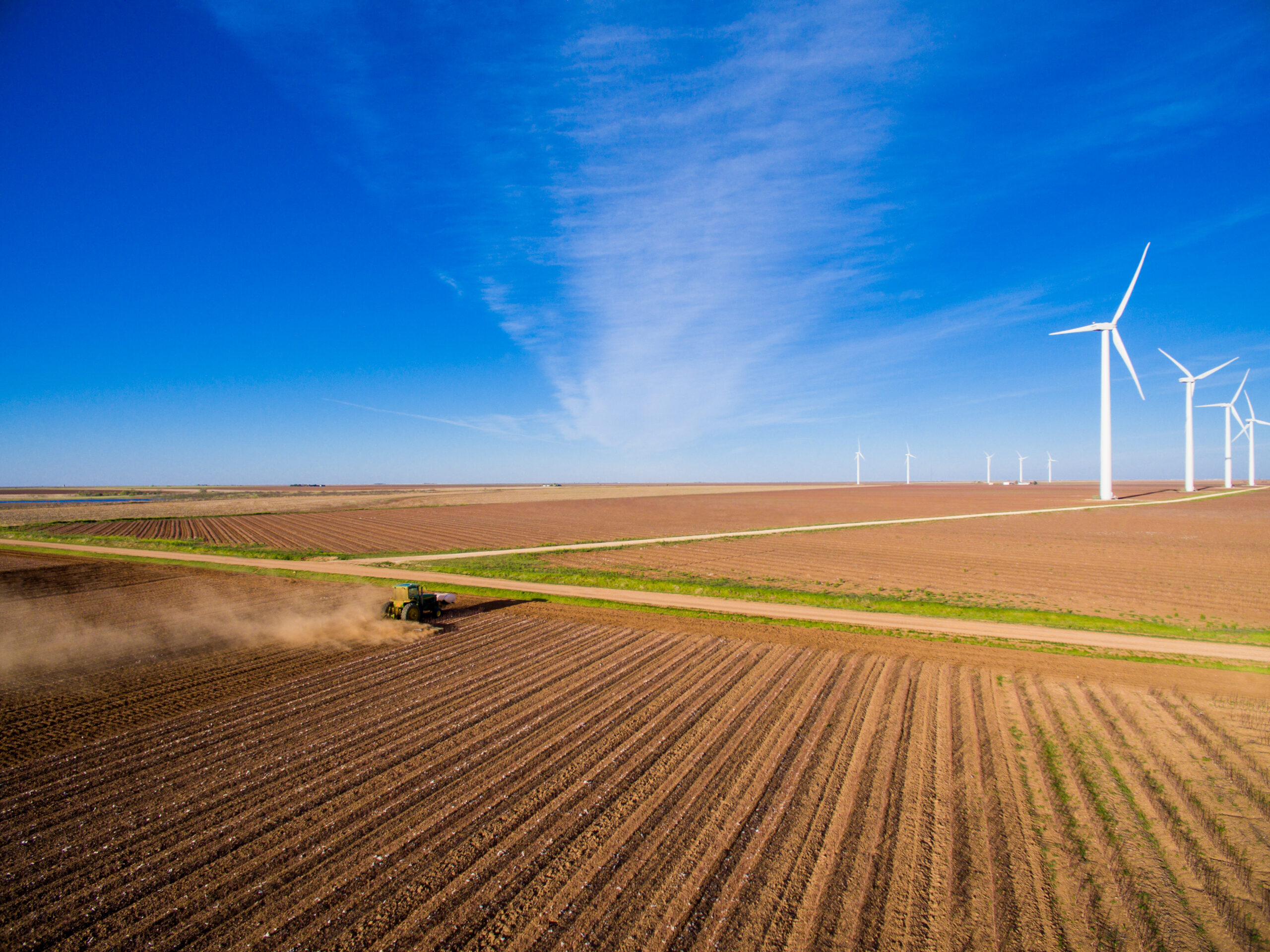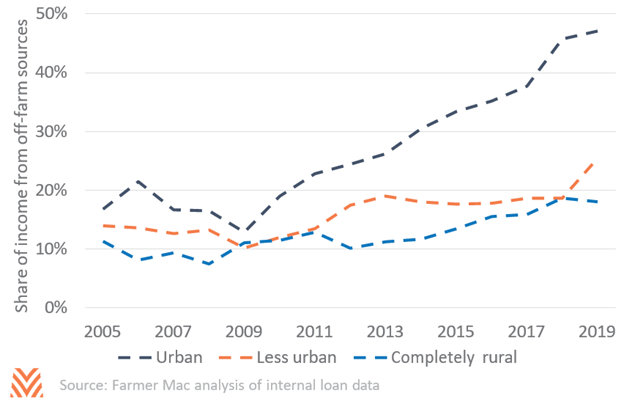Off-Farm Income and the Urban-Rural Divide

Off-farm income is an important source of income for most farms. According to the USDA’s most recent Agricultural Resource Management Survey data from 2017, the median farm had a household income of $74,950, and an off-farm income of $67,500. More than 80% of all income flowing to farm households came from off-farm sources. However, many farms are retirement or residence farms, which typically make little to no income from farm sources. Even among commercial farms, or operations with gross cash farm incomes (GCFI) above $300,000, median income from off-farm sources was $39,000, or roughly 20% of total net household income.
Disparate Impacts from the Great Recession
However, producers’ off-farm income opportunities may be diverging. Since the last recession, employment growth in nonmetro counties has consistently lagged that of metro counties. Between 2010 and 2018, metro counties saw employment gains of over 12% and population gains above 6%. The most rural counties saw population declines of 2% and saw net employment gains of 1.5%. Labor force participation in these counties remains well below pre-recession peaks, and incomes are growing more slowly, due in part to slowdowns in the agricultural and mining sectors.
While many operations exist in these completely rural counties, a significant number of producers are in counties that are considered urban. Most counties across the eastern corn belt are considered metro counties under the rural-urban continuum code. Even in less populous states like North Dakota, urban counties exist where 90% of the county land is in farms. Farms in these counties are typically farms just outside cities that see some influence from the metro region.
Producers’ Off-farm Income Opportunities May Vary by Location
An analysis of Farmer Mac’s portfolio found that, immediately following the Great Recession, borrowers across urban, less urban, and completely rural counties had similar shares of off-farm income relative to their GCFI. Over the next decade these groups stratified, as borrowers around metro counties saw their shares of off-farm income increase. Despite similar median GCFI, producers around metro counties saw almost double the off-farm income that their rural peers saw in 2019. Less urban producers lagged slightly but saw consistently higher off-farm incomes than completely rural producers.

While this does not prove that completely rural producers have fewer off-farm income opportunities, it does raise the question of how much geography will impact off- farm income. Farm financial data indicate that farms located close to metro areas are more dependent on off- farm income than farms in completely rural counties, but all farms see declines in their off-farm incomes during financial downturns.










